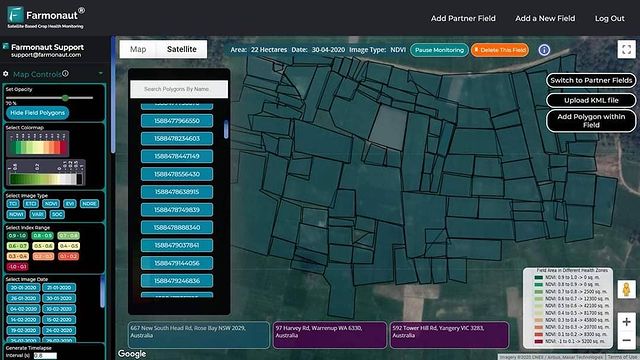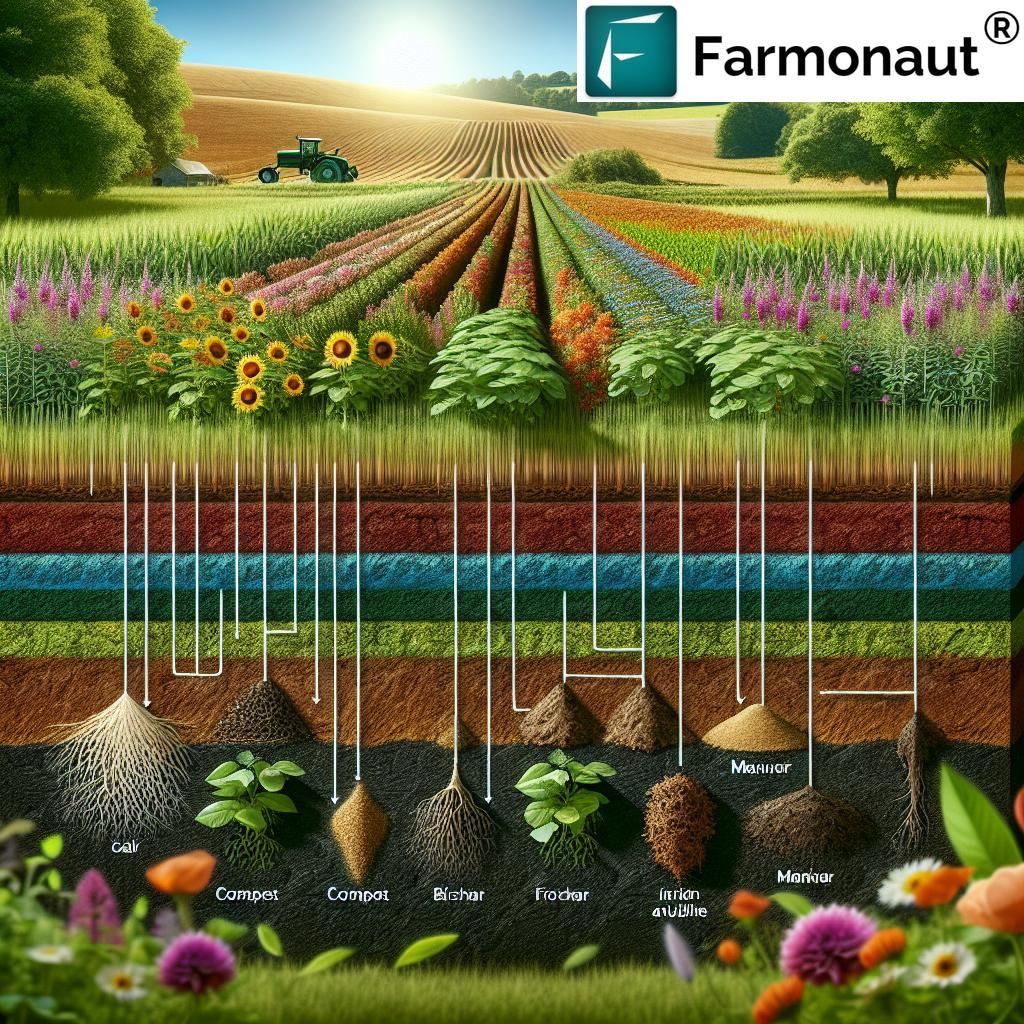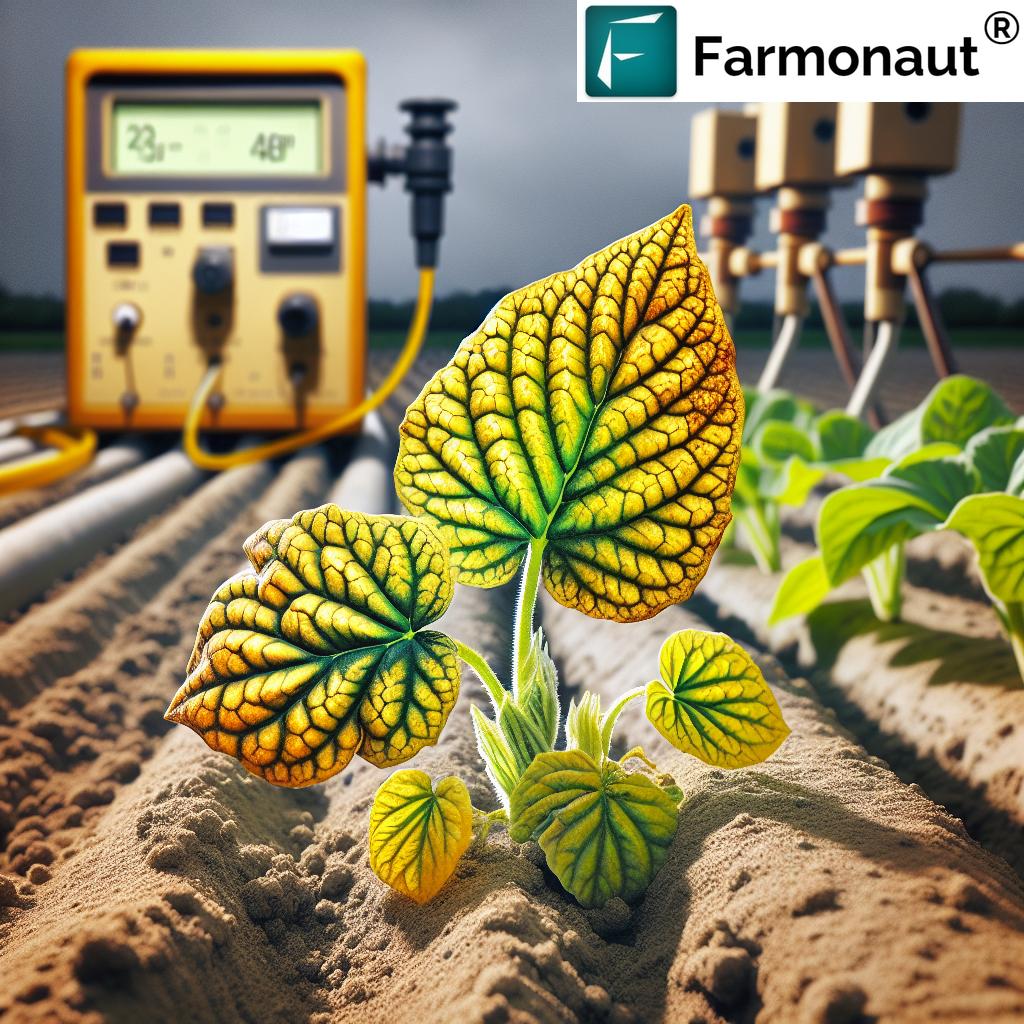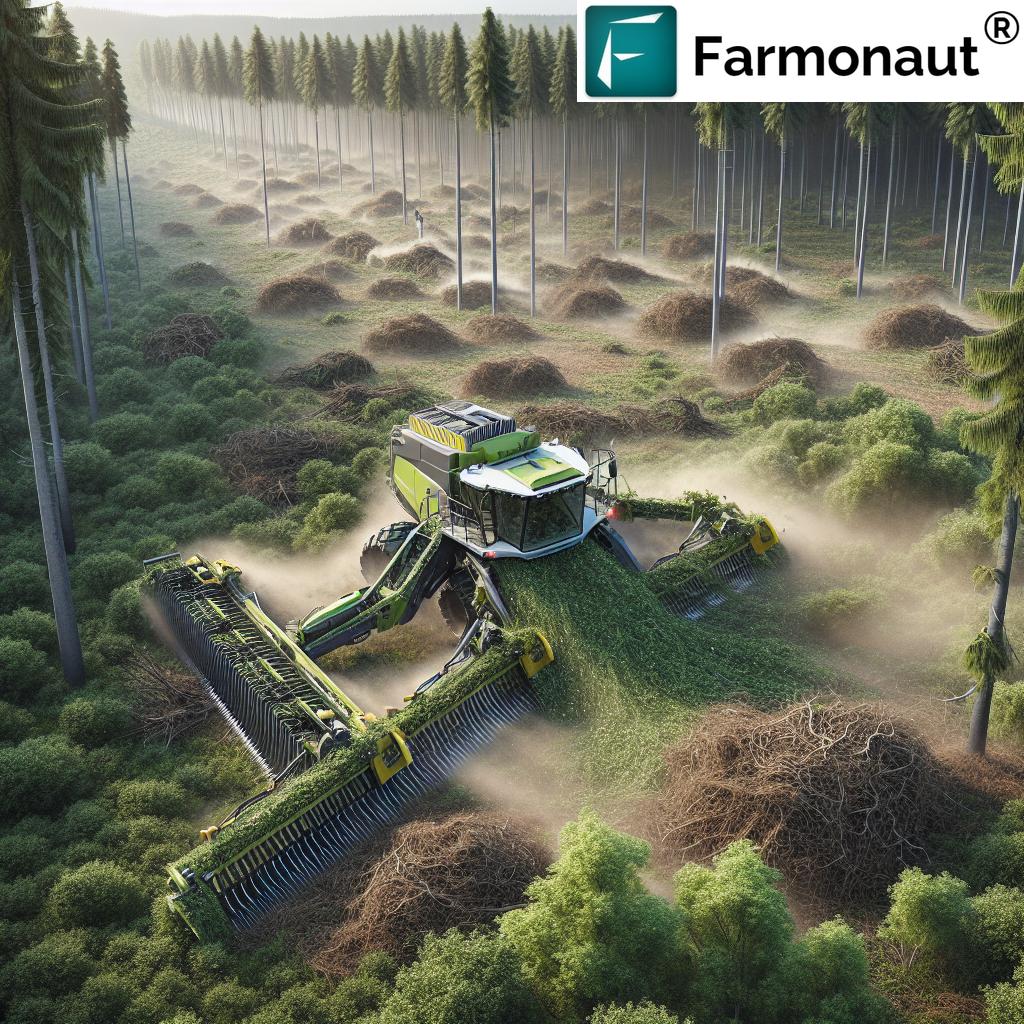- Introduction: The Imperative for Sustainable Agriculture in 2025
- Agriculture Types of Crops: Diversifying for Sustainability
- 4 Types of Sloping Agricultural Land Technology (2025)
- Bio Fertilizer Types: Keys to Eco-Friendly Productivity
- Comparative Matrix Table: Sloping Land Technologies, Crop Types, and Biofertilizers
- Farmonaut: Satellite Technology Advancing Sustainable Farming
- Frequently Asked Questions (FAQ)
- Conclusion: The Future of Sustainable Agriculture in 2025 and Beyond
“In 2025, over 60% of sloping farmland worldwide may adopt one of 4 sustainable land management technologies.”
Agriculture Types of Crops: 4 Sloping Land & Biofertilizers for Sustainable Productivity in 2025
Agriculture remains the backbone of global food security and rural livelihoods. As we move decisively into 2025, the quest for sustainability in agriculture is more vital than ever. Growing environmental challenges, from climate change and soil degradation to water scarcity and chemical overuse, mean that farm productivity can no longer come at the cost of ecological balance. Instead, the world is embracing diverse agriculture types of crops, leveraging four key sloping agricultural land technologies, and unlocking the power of bio fertilizer types to secure food and regenerate the Earth.
This comprehensive article explores advancements in sustainable agriculture (2025) by focusing on crop diversification, innovative sloping land management, and eco-friendly nutrient input. We’ll draw on scientific research, proven sustainable practices, and modern technologies—while highlighting Farmonaut’s role in enabling these advances—to illustrate a roadmap for resilient, profitable, and climate-smart farming.
Agriculture Types of Crops: Diversifying for Sustainability
Diversification of agriculture types of crops is recognized by agronomists and food experts worldwide as not just desirable, but essential for the sustainability of farms, the resilience of food systems, improved nutrition, and greater economic security for rural livelihoods. In 2025, the focus is on integrating four primary crop categories across contemporary cultivation systems—leveraging their unique benefits and interplay for greater farm and soil health.
1. Cereals: Staple Grains for Food Security and Calorie Intake
- Cereals are the backbone of global diets and farming. This group includes wheat, rice, maize, barley, and millet—staple grains cultivated worldwide for their crucial calorie contribution and versatile use in diets.
- In 2025, modern agriculture is witnessing the development of climate-resilient cereal varieties that can withstand drought, heat stress, and emerging pest outbreaks.
- These cereals remain critical for food security, intake, and global nutrition.
2. Pulses: Sustainable Protein and Nitrogen Fixation
- Pulses— lentils, chickpeas, beans, and others—are cultivated for their vital protein content and ability to fix atmospheric nitrogen in the soil.
- Their cultivation improves soil health and enhances the sustainability of rotational systems by reducing chemical nitrogen input and enriching nutrient content.
- The integration of pulses in rotation directly supports soil fertility and crop resilience.
“Biofertilizer use can increase sustainable crop yields by up to 30% compared to synthetic fertilizers.”
3. Oilseeds: Human and Industrial Consumption
- Oilseeds like soybean, sunflower, and groundnut are increasingly developed as non-GMO, pest-resistant strains to maximize yield while reducing chemical input.
- These crops provide nutrient-rich oils for both human consumption and industrial use, supporting a diverse range of economic activities.
4. Horticultural Crops: Nutrition, Income, and Innovation
- Horticultural crops—mainly fruits and vegetables—are essential for balanced diets and diversified income for farmers.
- Recent innovations in protected cultivation and vertical farming allow for year-round high-quality production even in adverse climate zones.
- Embracing modern horticulture results in improved farm income, food nutrition, and urban-rural food supply balance.
Integrating these four crop types in rotation and intercropping maximizes land use efficiency, supports climate resilience, and enhances soil and crop health. This sustainable approach also helps reduce disease and pest outbreaks, maintain soil fertility, and stabilize farmer income over time.
4 Types of Sloping Agricultural Land Technology: Maximizing Productivity & Minimizing Erosion
Sloping land represents a major share of global agricultural terrain, especially in regions such as the Himalayas, Andes, and Sub-Saharan Africa. Sloping agricultural land technology has evolved remarkably due to the urgent need to control soil erosion, manage water retention, and enable productive, sustainable cultivation systems.
Below, we detail the 4 primary sloping land technologies transforming upland and mountainous agriculture in 2025:
1. Terracing: Engineered Barriers Against Erosion
- Terracing involves shaping land into stepped platforms along slopes, each separated by an embankment or stone wall. This reduces runoff velocity, allowing water retention and soil stability.
- Modern terraces are geometrically designed using digital mapping tools (like those available via satellite technology platforms) to maximize efficiency and reduce labor.
- Crops: Most suited for cereals, pulses, and root vegetables on large-scale farms.
2. Contour Farming: Farming in Harmony with Nature
- Contour farming involves planting crops and constructing field operations perpendicular to the natural slope (along contours).
- This system slows water movement, reducing both soil erosion and nutrient runoff.
- New precision contour mapping, often using satellite insights and GPS-guided machinery, allows for accurate alignment and maximum effect.
- Crops: Cereals, legumes, and oilseeds thrive with this method.
3. Agroforestry: Integrating Trees, Crops, and Livelihoods
- Agroforestry is the deliberate integration of trees and shrubs with field crops and/or livestock on the same land.
-
This method brings multiple benefits:
- Stabilizes soil against landslide and erosion,
- Enhances moisture and nutrient retention,
- Increases on-farm biodiversity,
- Provides farmers with secondary products (timber, fruits, fodder, carbon credits).
- Crops: Especially well suited for perennial crops, pulses, horticultural crops, and soil-improving cover crops.
4. Bench Terracing: Precision Erosion Control for Steep Terrain
- Bench Terracing is an advanced form of terracing where slopes are cut into wide, flat benches reinforced with engineered retaining structures.
-
This method:
- Dramatically reduces soil and nutrient loss,
- Allows greater mechanization and accessibility for upland farming,
- Supports diversified, high-value cropping on otherwise marginal steep slopes.
- Crops: Fruits, vegetables, pulses, and specialty horticulture are especially feasible.
Adopting these four sloping land technologies enhances sustainable productivity, prevents soil and nutrient loss, and boosts farmer incomes in challenging terrain—making them essential for both food security and environmental stewardship in 2025 and beyond.
Field Application in 2025: Technologies and Digital Mapping
- Increasingly, remote sensing and satellite-based mapping—like that available through Farmonaut’s solutions—enable farmers and land managers to design, monitor, and optimize sloping land agriculture with precision.
- These technological advancements allow for real-time erosion detection, moisture monitoring, and resource planning.
Explore how Farmonaut’s carbon footprint monitoring platform empowers sustainable land and resource practices by tracking environmental impacts, critical for regenerative agriculture and farming system resilience in 2025.
Bio Fertilizer Types: Keys to Eco-Friendly Productivity
Biofertilizers are living microorganisms—bacteria, fungi, or algae—that enhance soil fertility, increase nutrient uptake for crops, and reduce dependency on synthetic chemical inputs. Bio fertilizer types are at the forefront of sustainable agriculture in 2025, directly contributing to increased crop yield, soil health, and climate resilience.
1. Nitrogen-Fixing Biofertilizers
- Rhizobium (for legumes), Azotobacter, and Azospirillum are key bio fertilizer types that convert free atmospheric nitrogen into forms usable by plants.
- Benefits: Enrich the soil, improve protein content of crops, and slash chemical nitrogen use by 50% or more in rotational systems.
2. Phosphate-Solubilizing Biofertilizers
- Microbes like Bacillus and Pseudomonas species break down insoluble soil phosphates and release phosphorus for crop uptake.
- Benefits: Significantly boosts root strength, supports grain and fruit quality, and reduces the environmental impact of excess phosphate fertilizer use.
3. Potassium-Mobilizing Biofertilizers
- Certain soil bacteria and fungi transform bound potassium in soil minerals into forms that are readily accessible to plant roots.
- Benefits: Promote plant disease resistance, enhance drought and heat tolerance, and improve overall fertility sustainability.
4. Other Functional Biofertilizers
- Mycorrhizal fungi: Partner with plant roots to boost water and nutrient uptake, especially phosphorus and micronutrients—critical for sloping land and degraded soils.
- Biocontrol microbes: Suppress soil-borne disease outbreaks and promote overall plant health without chemical inputs.
- Specialized biofertilizers are now customized for cereals, pulses, oilseeds, and horticultural crops to maximize efficiency, yield, and resilience.
The adoption of biofertilizers in 2025 is driven by compelling evidence—they improve yield by up to 30%, enhance soil microbial health, help reduce chemical pollution, and cost less than conventional fertilizers.
For digital traceability, food safety, and sustainability compliance, explore Farmonaut’s blockchain-based agricultural product traceability platform, ensuring authentic farm-to-table supply chains in the biofertilizer era.
As a company committed to affordable and accessible satellite-driven solutions, we at Farmonaut are pioneering real-time soil monitoring, crop health assessment, and remote advisory platforms that empower users to target biofertilizer application for maximum efficiency and ecological impact. Our technology is enabling informed nutrient management for farmers worldwide in 2025.
Comparative Matrix Table: 4 Types of Sloping Agricultural Land Technology, Crop Types & Biofertilizer Types (2025)
| Sloping Land Technology | Suitable Crop Type | Recommended Biofertilizer | Estimated Yield Increase (%) | Environmental Benefit |
|---|---|---|---|---|
| Terracing | Cereals, Pulses, Root Vegetables | Azotobacter, Phosphate Solubilizing Bacteria | 15–28% | Substantial soil erosion reduction; improved soil moisture retention |
| Contour Farming | Cereals, Oilseeds, Legumes | Rhizobium, Mycorrhizal Fungi | 12–20% | Reduction in nutrient runoff and water loss |
| Agroforestry | Pulses, Fruits, Horticultural Crops | Rhizobium, Mycorrhizae, Potassium-mobilizing Bacteria | 18–30% | Enhanced biodiversity, increase in organic matter, carbon sequestration |
| Bench Terracing | Fruits, Vegetables, Pulses | Mycorrhizal Fungi, Phosphate Solubilizing Bacteria | 20–32% | Superior soil stability and reduction in runoff; better access for diversified, high-value farming |
Farmonaut: Satellite Technology Advancing Sustainable Farming
In 2025 and beyond, advanced digital agriculture platforms such as Farmonaut have become central to sustainable land management, monitoring crop health, and enabling climate-smart decision-making. We at Farmonaut leverage satellite imagery, AI, and blockchain technology to enable users—including farmers, agri-enterprises, and governments—to improve farm efficiency, optimize input use, and track the environmental impact of farming practices.
Our multispectral satellite monitoring and Jeevn AI advisory system help users to:
- Monitor soil moisture, land health, and vegetation indices (NDVI) in real-time
- Detect emerging pest outbreaks and crop stress events for fast response
- Maximize input efficiency by enabling targeted application of biofertilizers and water, reducing chemical runoff
- Access blockchain-powered traceability for product integrity and transparent food supply chains
(see details here) - Track carbon footprint and environmental compliance using satellite data
(learn more) - Enable satellite verification for crop loans and insurance—simplifying access to capital for
farmers and reducing fraud (read more) - Manage large-scale agricultural operations, monitor fleets, and optimize resources via our satellite-based web and mobile solutions
(Farmonaut Agro-Admin App,
Fleet Management)
Try our satellite API or developer documentation for integration possibilities into your own digital farming platforms.
Ready for affordable, scalable, and advanced agricultural monitoring?
Frequently Asked Questions (FAQ)
What are the main agriculture types of crops essential for sustainability in 2025?
The four main types of crops in sustainable agriculture are cereals (wheat, rice, maize, barley, millet), pulses (lentils, chickpeas, beans), oilseeds (soybean, sunflower, groundnut), and horticultural crops (fruits, vegetables). Integrating these crops in rotation and intercropping enhances food security, soil health, and resilience to environmental stress.
Which four sloping agricultural land technologies are most effective for erosion control?
The four major sloping agricultural land technologies widely used in 2025 are terracing, contour farming, agroforestry, and bench terracing. Each system helps reduce erosion, improve water retention, and enable productive farming on sloping terrain.
What are the benefits of biofertilizers over chemical fertilizers?
Biofertilizers use living microorganisms to improve nutrient uptake in crops, increase soil microbial biodiversity, and shorten the nutrient cycle. Their use can increase yields by up to 30%, reduce chemical pollution, and support long-term soil health, making them critical for sustainable agriculture in 2025.
How can satellite technology help optimize sloping land agriculture?
Satellite technology, like that provided by Farmonaut, offers real-time mapping for designing terraces, monitoring moisture, detecting soil erosion hot spots, and tracking crop health. These insights empower farmers, businesses, and governments to make data-driven decisions for sustainable productivity.
Where can I access digital tools to manage crop health, traceability, and environmental footprints?
You can access Farmonaut’s satellite-driven platform via Web App, Android, and iOS. APIs and detailed documentation are also available for custom integrations.
Conclusion: The Future of Sustainable Agriculture in 2025 and Beyond
Sustainable agriculture in 2025 is anchored in optimized crop diversification, innovative land management, and eco-friendly nutrient solutions. The integration of different agriculture types of crops ensures food and nutritional security. Adoption of the 4 types of sloping agricultural land technology allows for productive and ecologically-balanced farming, even in difficult terrain. Leveraging the full potential of bio fertilizer types safeguards soil health, supports higher yields, and reduces pollution.
Technology—especially the advanced satellite, AI, and blockchain-driven solutions provided by Farmonaut—is now making it possible to monitor, manage, and enhance every component of these complex agricultural systems efficiently, affordably, and at scale. Embracing these advancements is imperative for safeguarding global food security, farmer income, rural livelihoods, and the very balance of our environment.
Let’s make 2025 the year we transform our collective agricultural future—with resilient crops, sustainable soils, advanced technologies, and a renewed commitment to ecological and economic balance.













